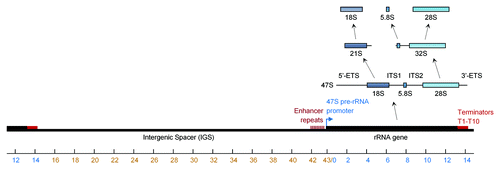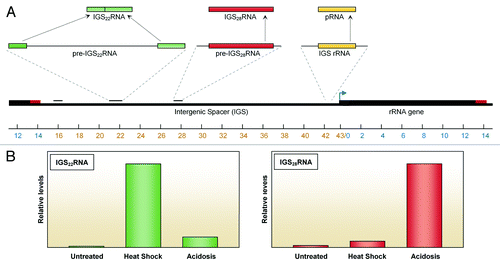Figures & data
Figure 1. Synthesis of rRNA from the ribosomal cassette. The human ribosomal cassette is composed of a ~13kb transcribed region followed by a ~30 kb intergenic spacer. RNA polymerase I is recruited to a promoter region, upstream of the ribosomal gene and transcribes a single polycistronic transcript that is then processed by either of two pathways into the 18S, 5.8S and 28S rRNAs.

Figure 2. Novel transcripts of the IGS. (A) The ribosomal intergenic spacer encodes multiple stimuli-specific transcripts. These RNAs are transcribed as precursor molecules that are then processed into a functional transcript capable of interacting with proteins and other cellular elements. (B) IGS22RNA is induced in response to heat shock while IGS28RNA is specific to acidosis.
